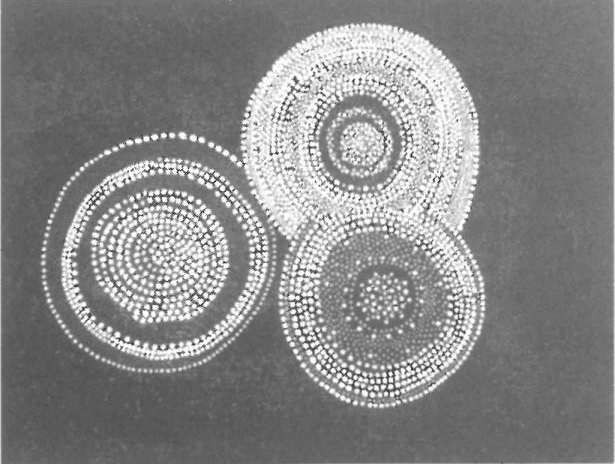
Normally room 11 on level 3 of the Metro Arts building in Brisbane is the studio of local emerging artist Rachael Haynes. However, once a month Haynes and fellow artist Chris Handran convert the studio into a small gallery space known as Studio 11. This new artist-run space is actually the first venture initiated by Peer Projects, a project-based partnership between Haynes and Handran aimed at providing innovative and accommodating opportunities for and by local emerging artists. The Peer Project mission then, not only concerns advocacy and support for emerging artists but also a dedication to the exploratory, speculative and at times provisional aspects of contemporary arts practices. In keeping with these principles, Studio 11 has hosted four exhibitions to date, each curated by local emerging artists. Although they have not caused major shockwaves throughout the Brisbane art community, the exhibitions program at Studio 11 is attracting an increasing band of followers.
The most recent exhibition held at Studio 11, titled B-Sides (curated by Martin Smith), was perhaps exemplary of the values underlying both Peer Projects and Studio 11's exhibition series. Featuring work from the 'alternative' practices of local emerging artists Lucy Griggs, Chris Handran, Gia Mitchell, Sebastian Moody and Smith himself, B-Sides' curatorial motivation was based on Simon and Garfunkel's 7 O'clock News/Silent Night. Of course, originally the term 'B-Sides' referred to the songs included as additional tracks on the 'B' side of vinyl record singles. Today, b-sides are still found on CD-singles, however, the term may also have broadened to include variants such as re-mixes and covers. In any case, b-sides are generally those songs that were at some stage worth recording, but eventually either not good enough for their own single release or inclusion on an album, and/or somehow out of sync with the remainder of the artists' work. It is through this framework that the works in B-Sides must be viewed.
For B-Sides, Lucy Griggs presented My First Attempt at Painting Fireworks (2003), a small work featuring three coloured circles on a black ground. Griggs' use of small dots in concentric circle patterns appears reminiscent of Western-Desert style imagery. Together with the work's title (possibly a reference to the Fire-Works Gallery in Brisbane that shows and represents Indigenous artists) Griggs pushes the limits of what is perhaps considered the greatest faux pas in Australian Art: the un-authorized appropriation of Aboriginal motifs and styles by a non-Indigenous artist.
Chris Handran's Compositions in Red, Blue and Green I & II (1998) incite slightly less controversy. Combining Lego pieces of various colours and sizes, these three-dimensional wall works have an implicit architectural quality. They resemble the unfinished or 'in progress' constructions of a seven year old, however, they also resemble the architectural models and reductive paintings of the De Stijl movement. The joke, of course, is that although they resemble both, they are in fact represent neither.
Frumpy Gia's Puppy Love (1996) is a photographic series by Gia Mitchell included in B-Sides. Borrowing surveillance and tabloid-press motifs, these images depict a middle-aged woman playing tennis alongside her dog. The woman who we gaze at through the obstruction of trees and branches is seemingly worth watching. Whether she is rich, famous, a criminal or royalty we do not know. Mitchell draws us in only to deliver her punch-line title: it is only the artist's alter ego whose intimate personal life we seek to spy on.
Sebastian Moody's three untitled nikko drawings from 2003 are presumably based on road maps of western Queensland, the mid-west of the USA and Greece respectively. Using white cardboard as their grounds and affixed to the wall with sticky-tape, these works feature a number of small circles each assigned to a place name from these regions. The layers of uncontrolled scribble that predominate the maps, then act as masks attempting to hide the contents of the images. Like Mitchell, Moody delivers an unwanted message: the maps neither reveal nor hide anything. Instead, they only serve to thwart one's attempt to decipher them.
Smith's own work, Prelude to a Conversation with John Howard (2003), features three large photographs of an uncomfortably dirty, yet inhabited, bathroom. The works' title seems to suggest a political application for these images; however the images themselves do not appear to house any particular political alignment or proposition. Rather, they invoke an image of the stereotyped 'dirty-hippie' that has plagued leftist political challenges for so long. As a 'prelude', perhaps Smith is suggesting the need for a rethinking of radical political strategies before one attempts to have a conversation with the rhetorically adept John Howard.
The curatorial scope of and works included in B-Sides is a prime example of Studio 11's underlying principles. Rather than being low-key, the program at Studio 11 is a refreshing alternative to the apparently high-key exhibitions presented at other galleries that, although perhaps more polished, can tend to also be more restrained. For a city that loves to promote emerging art, Brisbane has a strange shortage of gallery spaces receptive to the experimental and alternative aspects of emerging practices. Through this Peer Project initiative, Studio 11 is offering emerging artists and curators freedom to develop and present such exploratory and speculative practices.












